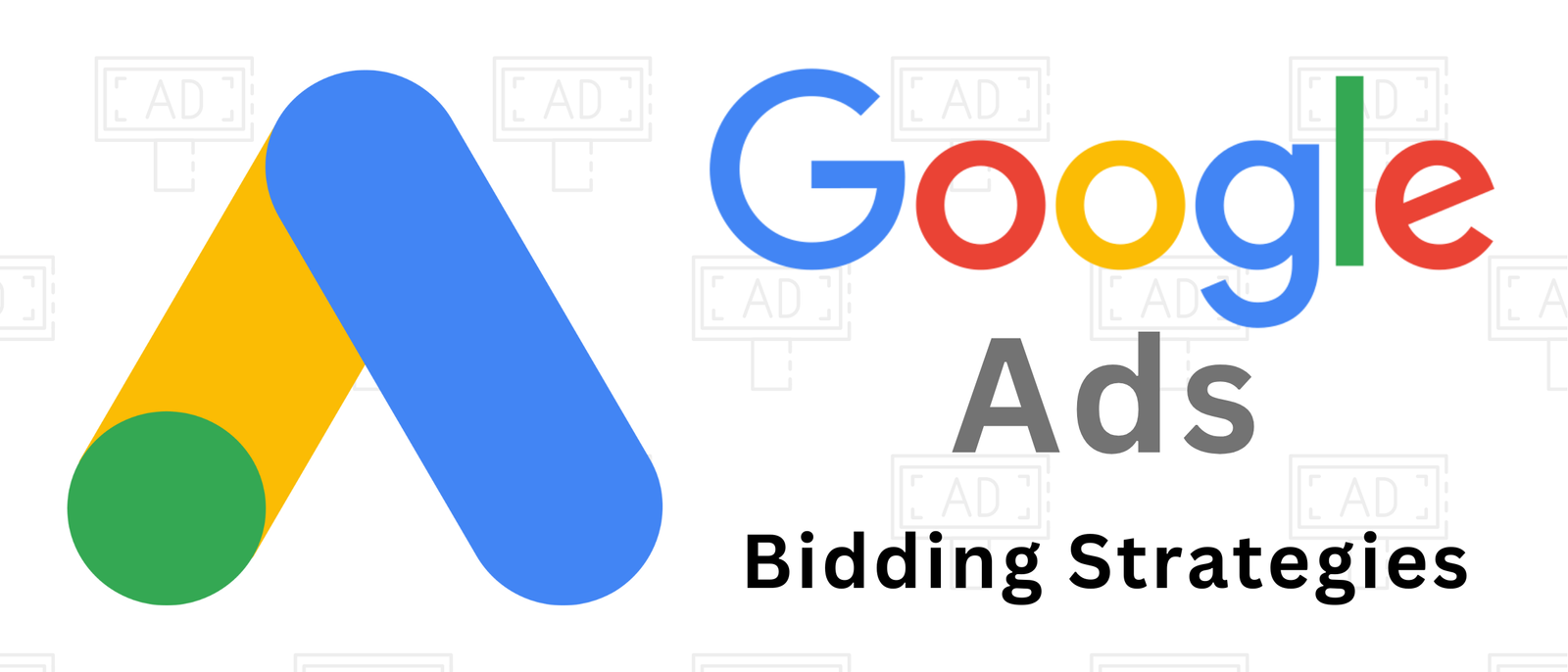WHAT ARE BIDDING STRATEGIES IN GOOGLE ADS
Google Advertisements offers several bid strategies tailored to different campaigns depending on which networks your campaign is targeting. Whether you want to concentrate on getting clicks, impressions, conversions, or views, you can determine which strategy is stylish for you. Automated bidding is a Google Advertisements bid strategy designed to maximize results based on your campaign goals. Google automatically determines bid levels with automated bidding based on the probability that your ad will be clicked or converted. They examine information such as the user’s device, operating system, location, demographics, and time of day while searching to do this.
Every single one of Google’s goal-driven, automated bid strategies is a portfolio bid strategy, which combines several campaigns, ad groups, and keywords.
This implies that marketers may use the approach they have selected for their campaigns, ad groups, and keywords. Specific ad tactics are offered as standard strategies, which may be used in a single campaign.
Automated bidding addresses two issues that marketers frequently have with their campaigns.
- Whether or not their offers are sufficiently high to draw in serious purchasers.
- Whether or not their offers are excessively high and could attract non-buyers attention.
There are eight different automated bidding strategies in Google Ads. Intelligent bidding strategies are conversion-based or value-based automated bidding strategies in google ads, that set unique bids for each auction based on information available during the auction.
This data might be the time of day, the particular advertisement being displayed, or the user’s location, device, browser, and operating system.
Maximize clicks
- Goal Boost website traffic. Available for use in single campaigns or conjunction with other campaigns, ad groups, and keywords.
- Description: Increasing website traffic is the aim of the Maximise Clicks strategy. The approach automatically sets bids to help you maximize clicks within your chosen budget. The bid strategy may be used as a traditional plan in a single campaign or as a portfolio over many campaigns, ad groups, and keywords.
- Stylish habituated When You have a solid conversion funnel and want to send as many visitors to your website as possible.
Target search page location
- Goal Boost your presence on the Google search results page’s first page or among the top results.
- Accessible During Campaigns
- Description: To improve the likelihood that your advertising will show up on the first page of a Google search or in one of the top ad positions, Target Search Page Location automatically sets bids. Only the Search Network offers it as a portfolio bid technique.
- Chic and accustomed when you wish to appear at the top of Google’s search results.
Target outranking share
- Goal Increase visibility over other websites
- Available In Campaigns
- Description: In an ad position, you may choose which advertiser’s domain to outrank and how frequently to do so while maintaining the appropriate outranking share. Google will then automatically modify your search bids to help you reach that objective. Target Outranking Share can only be approached with a portfolio strategy.
- Stylish habituated When You want to outrank a specific competitor in your industry.
Target cost-per-acquisition (CPA)
- Goal: Get further conversions with your target CPA
- Accessible through ad groups and campaigns
- Description Target CPA allows for further control over your automated bidding. With this strategy, Google automatically sets Search or Display bids to help you increase as many conversions as possible at your target cost-per-acquisition (CPA). There are chances that some of the conversions could cost more or less than your target.
- Stylish habituated When You’ve established a CPA that you can spend to acquire a customer while maintaining a profit.
Enhanced cost-per-click (ECPC)
- Goal: Boost conversions while maintaining control over your keyword bidding.
- Available in Campaigns, ad groups, keywords
- Description with ECPC Google automatically adjusts your homemade bids to help you generate further conversions while trying to achieve the exact cost- per conversion. ECPC is a voluntary feature when using Manual CPC bidding or as a portfolio bid strategy.
- Stylish Used when using a homemade bidding strategy but still want to take advantage of automated bidding.
Target return on ad spend (ROAS)
- Goal Meet a target return on ad spend (ROAS) when you value each conversion else
- Accessible through keywords, ad groups, and campaigns
- Description Target ROAS automatically sets your bids to help you receive as significant conversion value as possible at your set ROAS (the average value you receive in turn for every dollar you spend on ads). Some conversions may have an advanced or lower return than your target. Target ROAS is a regular campaign plan and a portfolio bid strategy.
- Chic is used when you want to concentrate on achieving the best possible conversion value rather than aiming for the most conversions overall.
Maximize conversions
- Goal: Receive further conversions while spending your budget
- Available In Campaigns
- Synopsis uses all your money; this technique automatically sets bids to help you obtain the most significant conversions from your ads. Google optimizes for a high amount of conversions using this technique. For individual campaigns, Maximise Conversions is offered as a regular strategy; however, it is not offered as a portfolio bid strategy.
- Chic and accustomed when you wish to automate your advertisements to increase conversions and have a big budget.
Cost-Per-Click (CPC)
You can place bids at the keyword or ad group level when using homemade cost per click. The highest degree of control is possible when individual bids are set at the keyword level. On the other hand, all keywords or placements inside an ad group receive the same bid from handmade bids at the ad group level. This is often the fashionable approach to bidding for new accounts, advertisers, or campaigns. You may monitor performance closely to ensure that none of your advertisements are overpaying.

